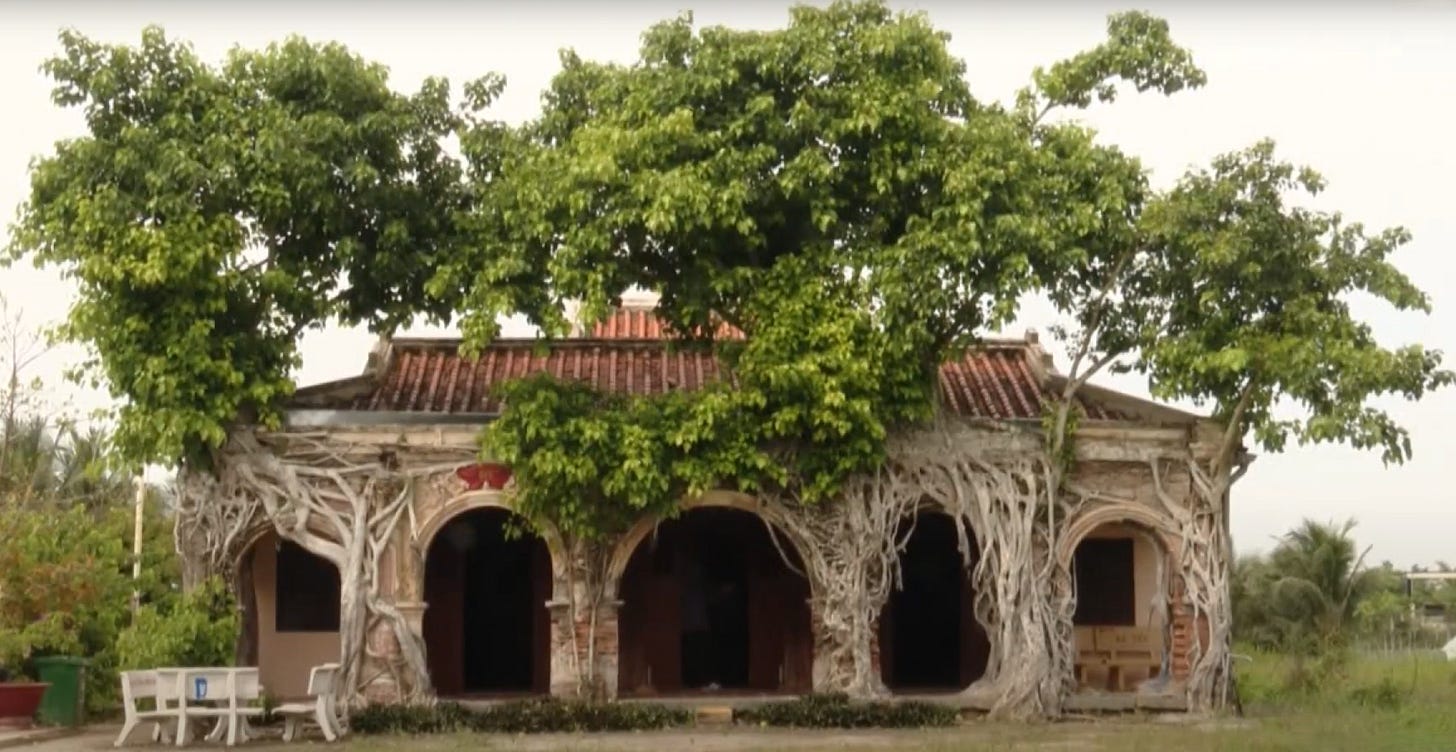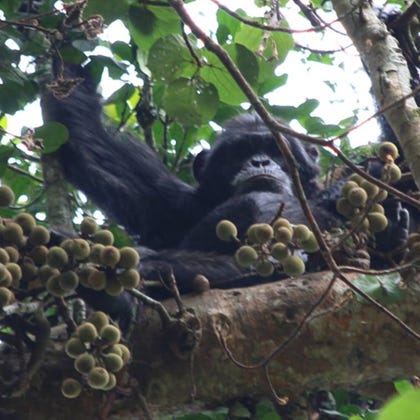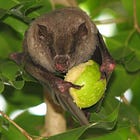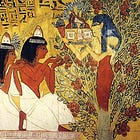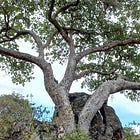Planet Ficus Monthly Roundup #5
Pre-human fig-eaters. Boozing chimps. Typhoon victims. Sacred fig trees in Kenya. Fig-wasps that cheat. A Vietnamese bonsai village. Krishna’s figs — and more.
Welcome to the Planet Ficus Monthly Roundup
Each month, I’ll bring you stories from around the world that reveal just how extraordinary fig trees are — not just biologically, but culturally, spiritually and artistically.
In this roundup, you’ll find: Pre-human fig-eaters, boozing chimps, typhoon victims, sacred fig trees in Kenya, fig-wasps that cheat, a Vietnamese bonsai village, Krishna’s figs — and more.
This variety is not random — it’s evidence that fig trees are everywhere in the human story and central to many ecosystems and cultures.
My mission with these roundups is simple: To show you that fig trees are the most interesting, important and awe-inspiring plants on the planet. Thanks for joining me on this journey. I hope these stories surprise and delight you, and maybe even change the way you see the natural world.
Let’s dive in.
Biodiversity, Ecology and Conservation
The island of Grande Terre in New Caledonia has been described as a land that time forgot — a remote place with strange species that have evolved in isolation since the age of the dinosaurs. But is it really? At Planet Ficus, I wrote about how a study of fig-wasp genetics provided the answer.
Sarbjit Singh Bahga wrote about the first Biodiversity Heritage Site declared by the Indian state of Punjab — a gigantic banyan fig (Ficus benghalensis) that spreads over 3.5 acres (1.4 hectares). His article has some great photos of the tree, from the ground and from the sky.
In an article published by the University of Maryland, biologist Carlos Machado explained how some species of fig-wasp cheat their fig partners and how the fig trees can fight back with sanctions.
In Kolkata in India the organizers of festivities to celebrate the Hindu festival of Durga Puja have chosen ‘extinction’ as the theme. The temporary temple – or pandal — includes a 24-foot-tall sculpture of a 112-year-old environmentalist called Saalumarada Thimmakka who is famed for having planted hundreds of banyan fig trees (Ficus benghalensis).
Memorial and Heritage Figs
On a hill on the outskirts of the Indian city of Gaya, people have turned two giant fig trees into memorials to lost loved ones. The trees – one a Ficus religiosa and one a Ficus benghalensis – are adorned with photographs of hundreds of men, women and children who all died sudden, unnatural deaths. As Sartaj Ahmad reports, the images are hung on the trees in the belief that this will help souls to depart in peace.
On 8 September, a ceremony took place at the war memorial in Port Lincoln, Australia to plant a fig tree descended from one that sheltered Australian soldiers during World War II’s Siege of Tobruk in Libya. The famed fig tree stood in the Libyan desert above a cave the soldiers used as an improvised hospital.
Much-loved Fig Trees in Vietnam
In September 2024, the strongest storm to hit Vietnam in 30 years — Typhoon Yagi — tore up more than 40,000 trees in the Old Quarter of Hanoi, including many ancient fig trees. To mark the anniversary, Al Jazeera broadcast Mr Cuong’s Banyan Tree, a poignant six-minute documentary about loss and resilience.
The Vietnam News Agency broadcast a short film in English about a community building in Dong Thap province that two strangler figs have enveloped over decades.
Meanwhile, in Vinh Long province, the Vietnam Association for Conservation of Nature and Environment and local authorities officially recognized five Ficus microcarpa figs as heritage trees.
Sacred and Cultural Figs
Researchers in India published a paper on the ecological and cultural significance of Ficus krishnae, a fig species with distinctive cupped leaves. The species is named after the deity Krishna — because of folkloric tales that say that, as a child, he used a leaf of this tree to steal and hide butter.
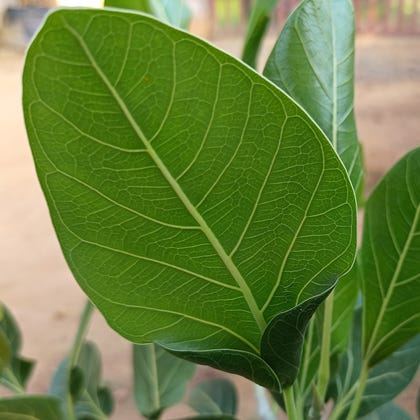
Saplings grown from seeds of one of India’s most famous fig trees will be planted across the country and beyond under a new initiative aimed at attracting tourists and pilgrims. The parent banyan tree (Ficus benghalensis) is at a site called Jyotisar where Krishna delivered the sermon of the Bhagavad Gita, among the most sacred texts in Hinduism. The Jyotisar banyan is said to be a descendent of one that sheltered Krishna as he spoke.
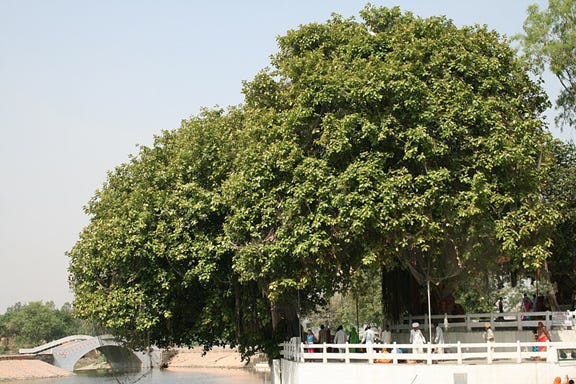
Kikuyu elders in Kenya planted and consecrated a mugumo —a sacred fig tree — to replace one that uprooted during the construction of a dam and reservoir. In the Kikuyu religion, sacred mugumo trees function as altars and places of prayer and ritual.
Also in September, a sculpture of a sacred mugumo fig was unveiled in Tatu City, a special economic zone near Nairobi. Sculptor Gerard Motondi carved the tree from a 24-tonne stone. Five years ago, the developer of Tatu City created a park around a venerable mugumo tree often visited by Kenya’s first Prime Minister, Jomo Kenyatta.
Figs in Art and Imagination
Singer-songwriter Rozzi wrote about how Sylvia Plath’s metaphorical writing about a fig tree — followed by her own encounter with a fig tree in Greece — shaped her thoughts and inspired her new album named, you guessed it, Fig Tree.
Nearly every household in the village of Vi Khe — in Vietnam’s Ninh Binh province — practises the ancient art of bonsai, shaping fig trees over decades into eye-catching forms. As Trong Tung reports, in a story with some great images, the biggest and best bonsai can sell for hundreds of thousands of dollars. One collector there recently turned down a million-dollar offer to buy three of his bonsai figs — photographed here.
Figs and human evolution
Robb Dunn wrote about the symbiotic relationship between figs and our pre-human ancestors, and its importance to the evolution of our own species, in an extract of his new book, The Call of the Honeyguide.
Scientists have shown that wild chimpanzees are drinking the equivalent of at least one alcoholic drink every day, by eating fermented fruit including figs. The research looked at chimps in Côte d’Ivoire and Uganda. The eight fig species they ate varied in their alcohol (ethanol) content, possibly because of differences in the yeasts that fig-wasps carry into figs.
In Uganda, chimpanzees preferred to eat figs of a species called Ficus mucuso, with a relatively high alcohol content (0.57%). Chimps can eat 75 of these figs in one session, enough to ingest 10 grams of ethanol, likely giving them a mild buzz. The researchers say their findings are consistent with the hypothesis that human predisposition to alcohol consumption derives from our pre-human ancestors being exposed to it by eating fruit.
Over To You
Do you have a memory, photo, or observation involving fig trees? I’d love to hear from you. Send your story or image to planetficus@substack.com — I’ll feature selected entries in future editions.
Thank you for reading Planet Ficus. Like the seeds of fig trees carried far and wide by birds and bats, this newsletter grows best when it’s shared. If you enjoyed this edition, please share it with a friend or invite them to subscribe.




